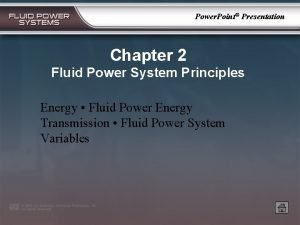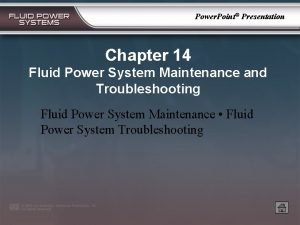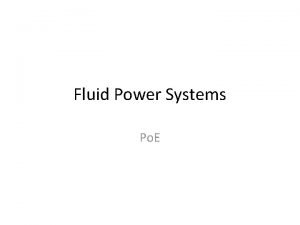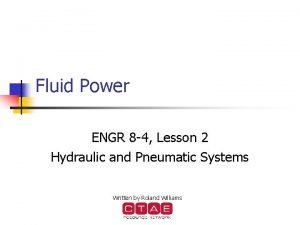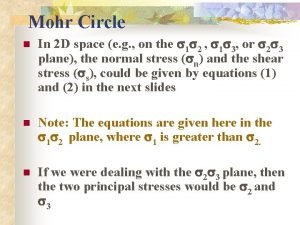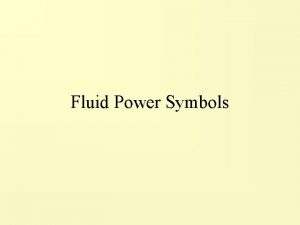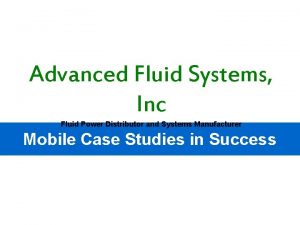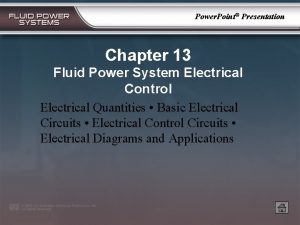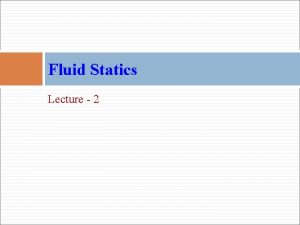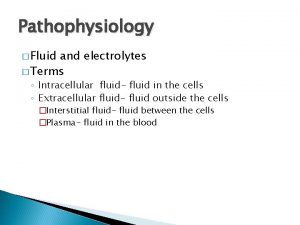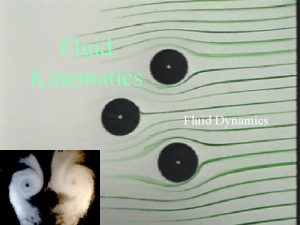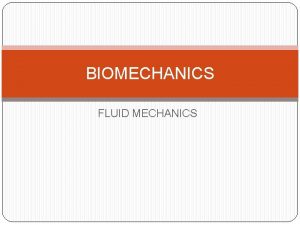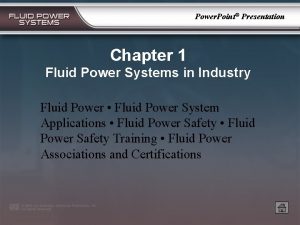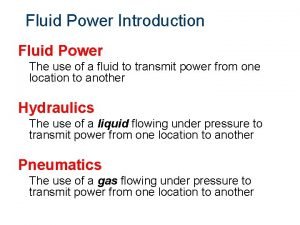Power Point Presentation Chapter 2 Fluid Power System






















- Slides: 22

Power. Point® Presentation Chapter 2 Fluid Power System Principles Energy • Fluid Power Energy Transmission • Fluid Power System Variables

Chapter 2 — Fluid Power System Principles In fluid power systems, total energy is the sum of static energy, kinetic energy, and thermal energy.

Chapter 2 — Fluid Power System Principles Rotating mechanical energy is transferred to a hydraulic pump, which supplies hydraulic energy to the system in the form of kinetic energy (fluid flow).

Chapter 2 — Fluid Power System Principles Electric energy is changed into rotating mechanical energy by the electric motor and is transmitted to the conveyor belt by a belt drive system.

Chapter 2 — Fluid Power System Principles When making comparisons between hydraulics and pneumatics, there are differences in system variables that must be taken into consideration.

Chapter 2 — Fluid Power System Principles Heat from friction is generated through different actions in a fluid power system, such as fluid flowing through a hose, or a piston moving against a cylinder body.

Chapter 2 — Fluid Power System Principles Fluid power systems complete work using actuators such as cylinders, motors, and oscillators.

Chapter 2 — Fluid Power System Principles The amount of work produced is calculated by multiplying the force that must be overcome by the distance over which it acts.

Chapter 2 — Fluid Power System Principles Power indicates the rate that work is done.

Chapter 2 — Fluid Power System Principles Horsepower is a mechanical unit of measure equal to the force required to lift 550 lb, 1 ft in 1 sec.

Chapter 2 — Fluid Power System Principles Pascal’s law states that an applied force placed on a fluid will transmit undiminished in all directions.

Chapter 2 — Fluid Power System Principles In hydraulic systems, area typically refers to diameter of the piston face.

Chapter 2 — Fluid Power System Principles Pressure is determined by the area and force present.

Chapter 2 — Fluid Power System Principles The fluid power (Pascal’s law) circle is a visual representation of how the formulas for pressure, force, and area are interrelated in a fluid power system.

Chapter 2 — Fluid Power System Principles Less pressure is required to extend a rod than to retract one due to more surface area.

Chapter 2 — Fluid Power System Principles Atmospheric pressure is the pressure created by the weight of the atmosphere at sea level under standard conditions.

Chapter 2 — Fluid Power System Principles The difference between gauge pressure and absolute pressure is 14. 7 psi, or atmospheric pressure.

Chapter 2 — Fluid Power System Principles A mercury barometer indicates atmospheric pressure with a column of mercury.

Chapter 2 — Fluid Power System Principles A Bourdon tube pressure gauge indicates pressure using the movement of a Bourdon tube.

Chapter 2 — Fluid Power System Principles A spring-loaded piston gauge uses fluid pressure to push a piston against a compression spring that is attached to a pointer.

Chapter 2 — Fluid Power System Principles A digital pressure gauge converts fluid pressure into an electrical signal and has an easy-to-read digital display.

Chapter 2 — Fluid Power System Principles Common vacuum gauge readings range from – 1. 47 in. Hg to – 14. 7 in. Hg, and – 0. 10 bar to – 1. 01 bar.
 Is synovial fluid extracellular fluid
Is synovial fluid extracellular fluid Fluid statics deals with fluid at rest
Fluid statics deals with fluid at rest Fluid statics deals with fluid at rest
Fluid statics deals with fluid at rest Transcellular fluid
Transcellular fluid Intracellular extracellular fluid
Intracellular extracellular fluid Interstitial fluid vs extracellular fluid
Interstitial fluid vs extracellular fluid Fluid mechanics chapter 4 solutions
Fluid mechanics chapter 4 solutions Movement of body fluids
Movement of body fluids Ascitic fluid examination
Ascitic fluid examination Power systems
Power systems Fluid power system ppt
Fluid power system ppt Fluid power system
Fluid power system Pneumatic system
Pneumatic system Fluid power control
Fluid power control Ppt on hindi topics
Ppt on hindi topics Power point presentation design west vancouver
Power point presentation design west vancouver Point point power
Point point power Powerbi in powerpoint
Powerbi in powerpoint Hydrostatic pressure mohr's circle
Hydrostatic pressure mohr's circle Power triangle diagram
Power triangle diagram Berendsen adelaide
Berendsen adelaide Fluid power symbol
Fluid power symbol Marine fluid systems
Marine fluid systems









